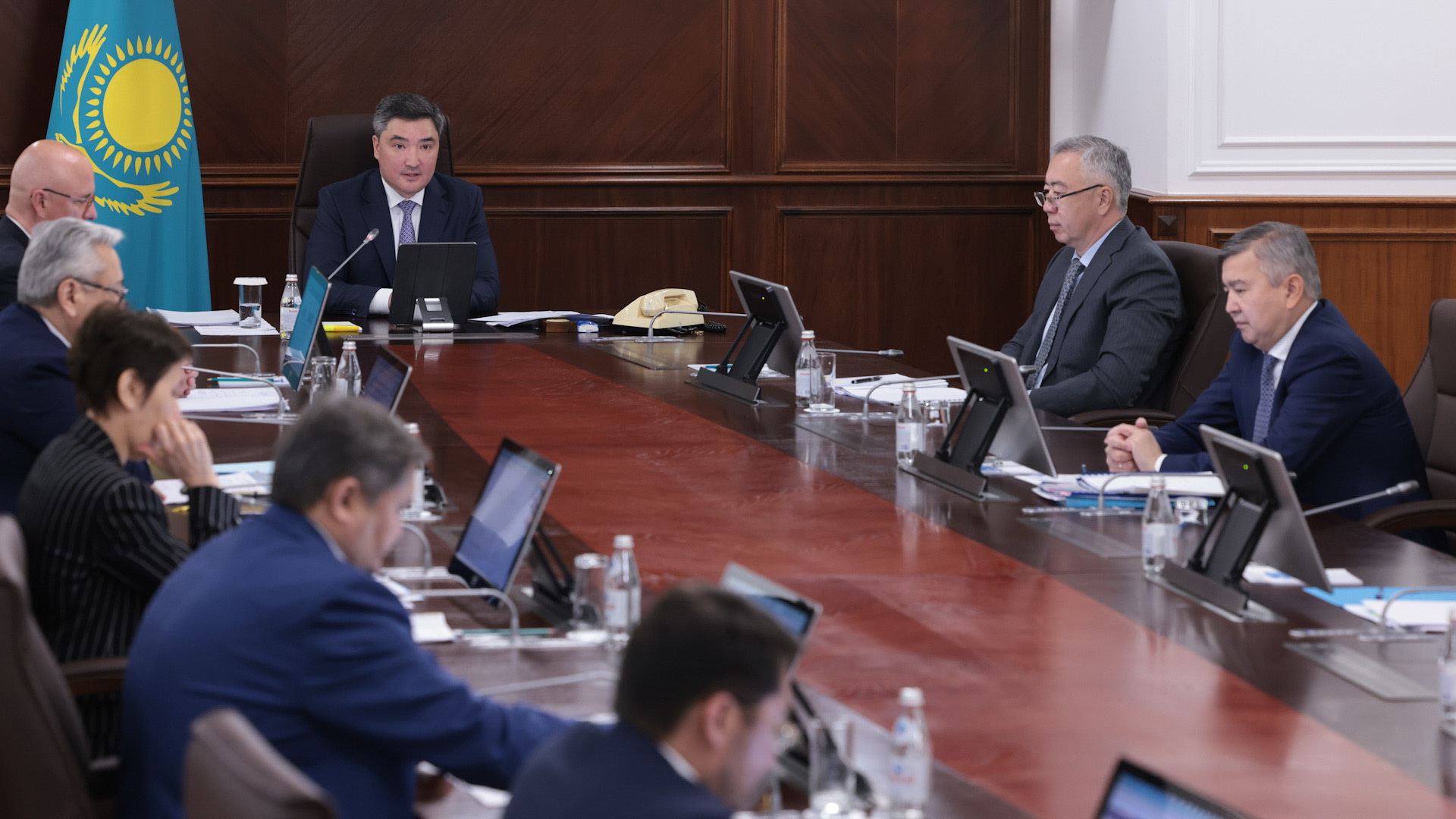ASTANA—Kazakhstan plans to commission four gas processing plants gradually from 2026 to 2030. These plants will process raw materials from the Kashagan field, which has capacities of one billion and 2.5 billion cubic meters per year, the Karachaganak field, which has capacities of four billion cubic meters per year, and the Kazakh gas processing plant in Zhanaozen, which has capacities of 900 million cubic meters per year.

Olzhas Bektenov chairs a 16 July government meeting. Photo credit: primeminister.kz
Energy Minister Almassadam Satkaliyev announced this at a government meeting on July 16, chaired by Prime Minister Olzhas Bektenov, reported the Prime Minister’s press service.
The Qatari investor UCC Holding has been engaged in building gas processing plants based on raw materials from the Kashagan field. The final conditions for these projects are being finalized between QazaqGaz national company and UCC Holding.
Kazakhstan’s gas industry has been steadily growing in recent years. The production plan for 2024 is set at 60.5 billion cubic meters, representing a 2.3% increase from 2023. In the first half of 2024, gas production reached 30 billion cubic meters, nearly 50% of the year’s plan. This growth is primarily driven by large fields such as Karachaganak, Tengiz, and Kashagan.
In 2023, the volume of commercial gas production was 29.8 billion cubic meters, and the plan for 2024 remains the same. By mid-2024, 14.9 billion cubic meters were produced, meeting 50% of the annual plan. Of this commercial gas, 19.4 billion cubic meters were supplied to the domestic market in 2023.
The production volume of liquefied petroleum gas in 2023 was 1.6 million tons, with the same target for 2024. By the first half of 2024, 0.8 million tons were produced, achieving 53.3% of the annual plan.
Bektenov focused on the issues of the flow of liquefied petroleum gas to neighboring countries. Valuable and scarce raw materials necessary for the development of petrochemicals are increasingly used in Kazakhstan as automobile fuel. Considering that retail prices for liquefied gas in the country are approximately two times lower than in Russia, Uzbekistan, the Kyrgyz Republic, and non-CIS countries, there is the problem of illegal export of large volumes of gas to neighboring states.
Previously, the Prime Minister instructed the relevant government agencies to strengthen efforts to suppress the “gray” export of liquefied gas, including by establishing criminal liability.
Kazakhstan’s forecast gas balance indicates a steady increase in commercial gas generation, rising 1.6 times from 22.5 billion cubic meters in 2023 to an anticipated 36.6 billion cubic meters by 2030.
QazaqGaz and Chevron signed an agreement for joint geological exploration at the Zhalibek site in the Aktobe Region to attract investment in new gas fields.
By the end of 2023, 60% of Kazakhstan’s population, or around 12 million people, had access to gas. To ensure uninterrupted gas supply, it is planned to implement large strategic infrastructure projects, including the second line of the Beineu-Bozoi-Shymkent gas pipeline and the Aktobe-Kostanai and Taldykorgan-Usharal gas pipelines.
Work is underway to utilize the country’s gas transit potential fully. In October 2023, the transit of Russian gas to Uzbekistan began, with 1.28 billion cubic meters transported that year. In 2024, the goal is to increase this figure to 3.8 billion cubic meters, with further plans to reach 11 billion cubic meters annually.
Additionally, the transit of Turkmen and Uzbek gas to China is expected to grow. Plans are to increase transit to 37.1 billion cubic meters this year, up by 1.5 billion cubic meters from last year. The issue of increasing the transit of Russian gas towards the Kyrgyz Republic is under discussion.


